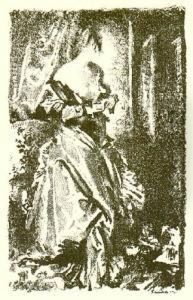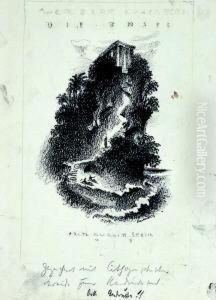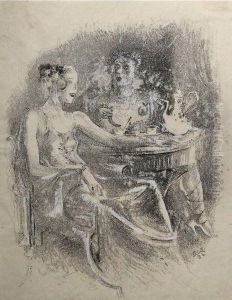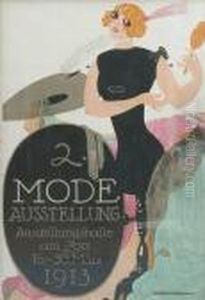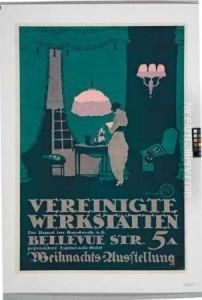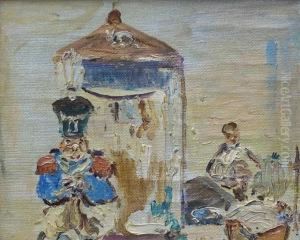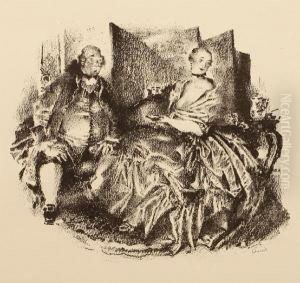Paul Scheurich Paintings
Paul Scheurich was a German artist known for his contributions to porcelain design as well as his illustrations and paintings. Born on July 16, 1883, in New York City to German parents, Scheurich's family moved back to Germany when he was still a child. He spent most of his artistic career in Germany where he became a significant figure in applied arts, particularly during the early 20th century.
Scheurich studied at the Royal School of Art in Berlin from 1902 to 1906. After completing his education, he began working as an illustrator and became known for his contributions to magazines and books. His illustration work often featured elegant and graceful figures, reflecting the Art Nouveau style that was popular during the period.
In the realm of porcelain, Scheurich made a significant impact through his work with the Meissen Porcelain Manufactory. Starting in 1910, he designed numerous figurines and porcelain pieces that were noted for their delicate and detailed craftsmanship. He developed a reputation for his ability to capture the fluidity and movement of figures, a skill that translated well into the medium of porcelain.
Scheurich's work was not limited to small-scale objects; he also executed designs for larger works, including decorations for buildings and monuments. Despite this, he is most celebrated for the porcelain figurines that reflect a sense of whimsy and elegance, capturing the essence of the characters they represent.
Scheurich's career was impacted by the World Wars, and the economic conditions in Germany during the interwar period influenced the art market. Nevertheless, he continued to produce work throughout these difficult times. Paul Scheurich died on June 29, 1945, in Brandenburg, Germany. His legacy lives on through the collectible porcelain figures that remain sought after by collectors and the illustrative works that continue to be admired for their artistic quality and historical value.

